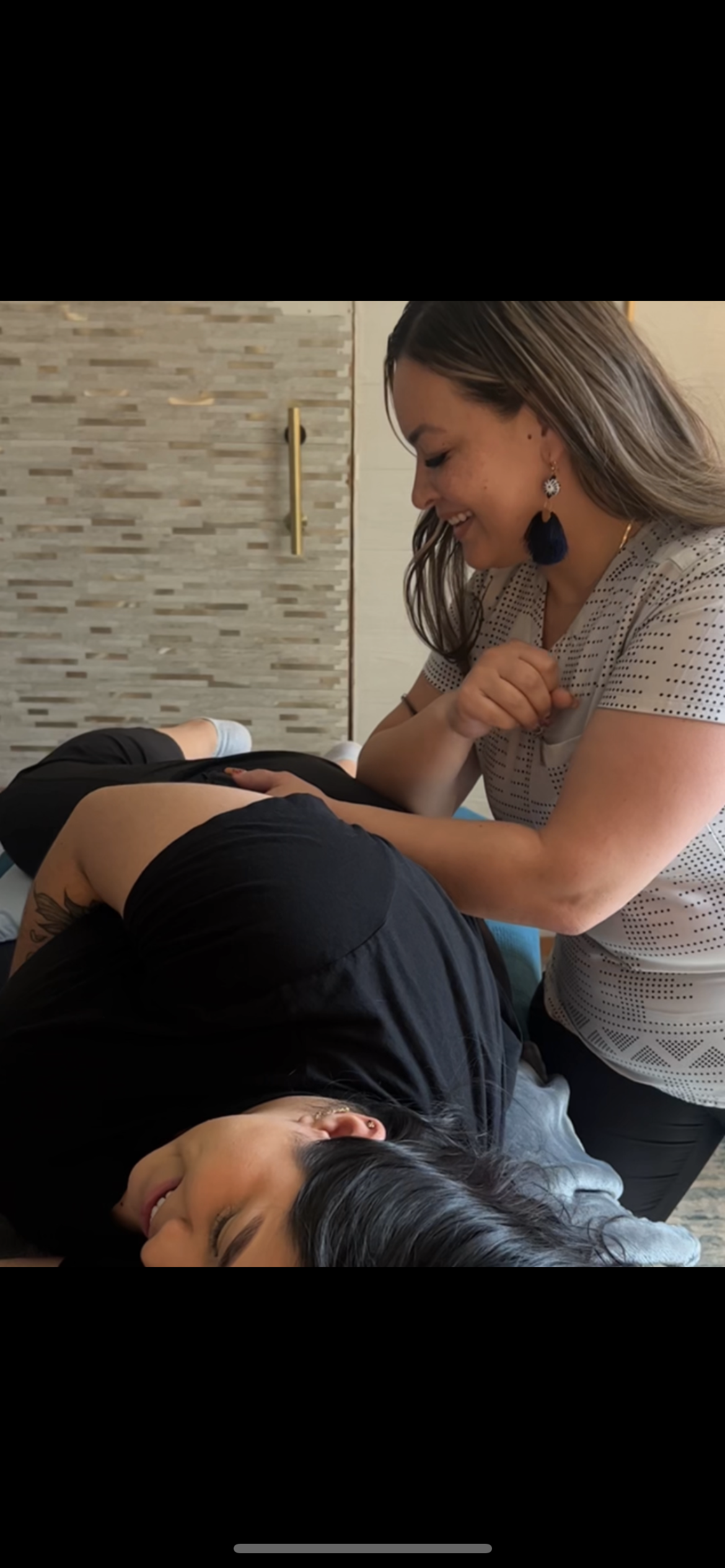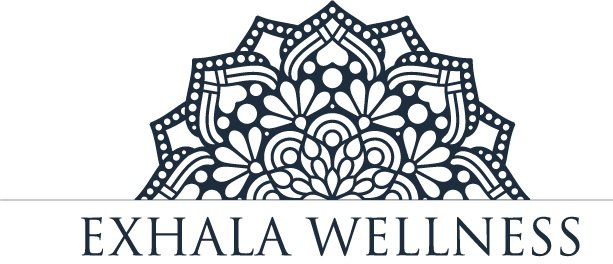
Structural Integration
Soma® Neuromuscular Integration Bodywork
Form and function are a unity, two sides of one coin.
In order to enhance function, appropriate form must exist or be created.
-Dr. Ida Rolf
What is Soma?
SOMA Neuromuscular Integration® is a form of bodywork that uses a systematic approach to re-educate the body to be aligned in gravity. Over time, the body can forget its natural alignment.
Postural deficiencies, repetitive movements, injury compensation, and emotional holding create tension in the body, leading to imbalance.
Uncorrected, the effects of imbalance and tension are exacerbated by the force of gravity, often leading to pain and decreased mobility.
Soma works to rebalance the body and restore its natural alignment. The effects of the work can include reduced pain, improved posture and increased mobility.
Soma has the greatest benefit when experienced as “the series” — 11 sessions, each designed to address specific areas of the body while bringing balance to the whole.
The combination of deep tissue bodywork, movement education and increased body awareness leads to a body that can move effortlessly with ease and grace.
History of Soma
Soma Neuromuscular Integration® finds its origin in the structural explorations of Ida P. Rolf, a Ph.D. Biochemist with an interest in healing.
Through extensive study of the body and the effects of manipulating its tissue, she determined that the body functions optimally when its segments are aligned in gravity.
Dr Rolf developed a series of bodywork sessions that, combined with movement education, enabled the body to correct imbalances and re-align its structure thereby allowing issues with the body to resolve.
This is the basis of the bodywork modality known as Structural Integration and Rolf’s 10 session series has become the standard application of this work.
In 1977, Dr Rolf granted colleague Bill Williams, a Ph.D. Psychologist and Certified Rolfer, the right to blend the series with his work on psychology and energy.
By layering emotional and psychological components on top of the physical work, Williams developed a methodology that addressed the connection between mind, body, and spirit and the result was Soma.
In 1986, Williams transferred ownership of the Soma Institute of Neuromuscular Integration to Karen Bolesky, M.A., L.M.H.C, L.M.P.
Under the guidance of Bolesky, the Institute continues to develop the modality and to educate Soma practitioners. Maintaining the view that humans are multidimensional beings, the work continues to focus on attaining optimal alignment and function in gravity for the physical body while providing a connection between the mind, body and spirit.
Soma brings ease and grace in movement and increases awareness of the body and how it exists in its environment. Ultimately, this translates to adaptability and the ability to experience life more completely.
So how does it work?
SOMA uses a systematic approach to work the body’s tissue and resolve patterns of holding that cause imbalance.
Through a series of sessions, specifically implemented in a sequence to maximize the response and re-education of the body, a practitioner will first do deep work to unbind the fascia and release areas of excess tension causing imbalance.
This process is called differentiation and is designed to allow segments of the body to move freely and independently.
Once release work is complete, the process of integration begins. Again the tissue is worked but in a fashion to rebuild communication and connectivity between the segments of the body.
Muscles don’t work in isolation so there should be communication all through the body to work as an efficient whole, not a bunch of disjointed segments. This creates efficiency and awareness of movement in the body.
Throughout the process practitioners provide movement education to enable clients to bring awareness to how they move and how their body feels when moving.
The mind is connected to the body and engaged in how it functions. This can help to break old detrimental patterns that cause imbalance in the body while retraining the body to work efficiently and helping to set the new, optimal alignment.
At the end of the series, with the body in balance, compensations and stresses on the tissue are relieved and the body should then be able to function in an optimal state.
Instead of fighting the effects of gravity, the client can move freely and with ease.
Structural Integration Series
Intranasal Work
Exhala Wellness also offers work targeted at the neck and facial areas. This type of session is particularly effective for those suffering from TMJ, headaches or chronic neck tension/pain. People suffering from allergies have found relief after an intranasal session.
The work of the seventh session is directed entirely toward balancing the neck and head on the spine. During a seventh session, we work on the fascia of the neck, open the connective tissues around the skull and face and help to improve breathing further by opening constricted nasal passages.
This a session that can be done as a stand alone treatment and commonly is during Spring and Fall seasons.
Currently not taking NEW clients.
FAQs
-
No other force in the world is as dramatic or potent as gravity and it’s the law that affects every body on the planet. For example, as we age we lose circulation, height, flexibility, and prolapsed organs can occur.
These are only a few affects gravity produces, but certainly critical to health and well-being. Because of repetitive motions and overuse of our bodies, imbalances are created. Some may call these problems, but they’re merely an unavoidable result of the constant force of gravity.
Structural integration aims to create lift from gravity by working with connective tissue to combat the downward force that pulls at the body over time.
-
Fascia is a thin, fibrous, strong tissue that envelopes and connects muscles. If you imagine an orange, it’s similar to the pith that encases the whole orange and it’s segments. Think of the slice of the orange as the muscle and the shiny protective casing as the fascia.
Connective tissue is broad word, but can be classified within four categories. Its main purpose is to create structure and support connecting two or more types of connective tissue across the body. Connective tissue as a whole should be resilient, flexible, responsive to gravity and hydrated.
When imbalances are created, connective tissue becomes dehydrated, coarse, and shortened. Over time, the imbalances create strain in the body that can be felt by stiffness, general discomfort, the reduction of flexibility and movement.
-
Structural Integration practitioners gained an early reputation associated with pain, but the work has advanced and evolved since then. There are several factors to be considered if Structural Integration will hurt.
First, there are areas in the body that hold chronic tension or stress. And how long has the negative pattern been prevalent in the body? We both will gauge the level of intensity and threshold that is best pending the type of sensation present. Sensations range from a ‘hurt so good’ satisfying release, to tenderness, to temporary, mild discomfort.
The goal is to customize each Structural Integration session to match each client’s goals and that of the overall focus of the therapy. Structural integration is a very personal process and no one person is exactly alike. This is a co-creative process where we work together as a team.
-
Massage and Structural Integration are both healing in nature, but the techniques performed are different. Both therapies include hands-on manipulation, but Structural Integration practitioners are broadening and lengthening connective tissue (fascia) to create fluidity, whereas massage is primarily concerned with muscles. Although there are various forms of massage, it is commonly used for relaxation achieving short-term results. Structural Integration aims to achieve longterm results via structure and alignment organizing, shaping, and integrating within the field of gravity. Those are not principles massage shares.
-
Sessions are completed with comfortable attire for the client. Women commonly wear running shorts and sports bra or tank top. Men can wear undergarments or running shorts. Again, I urge clients to wear comfortable attire. The more comfortable the attire, the more engaged in the process the client can become and less worried about being uncomfortable or uncovered. All clients will have a blanket on them during the session to provide further protection and comfort. The blanket will be gently moved when I need to work in a certain area of the body.
-
Each treatment session can vary person to person. Typically, treatments are 50-60 minutes long, and sometimes they can extend to 75 minutes long. Each session has a different intention and timing can vary based on what we are working with that day.














